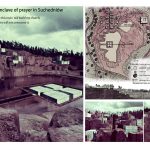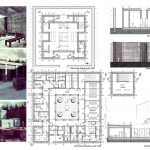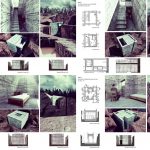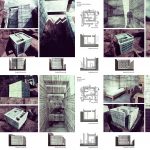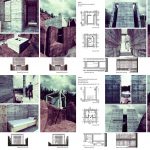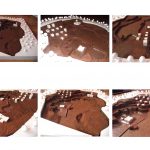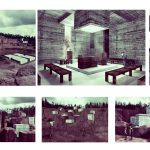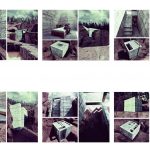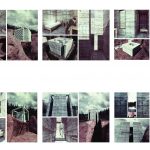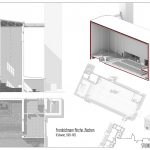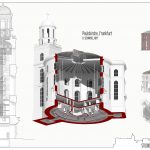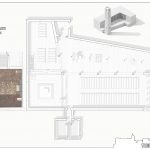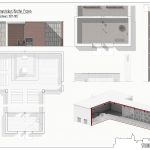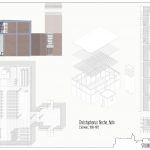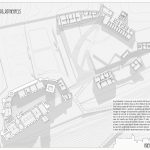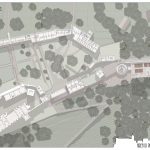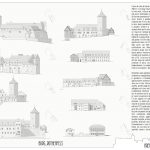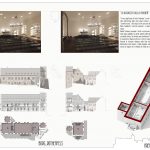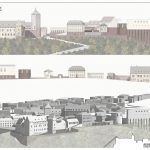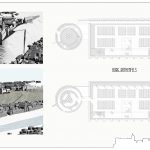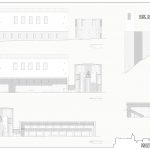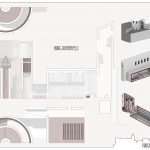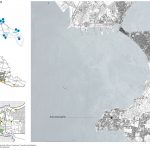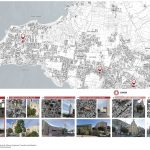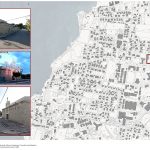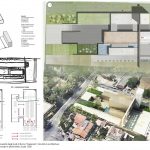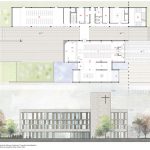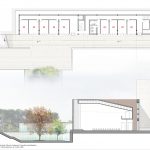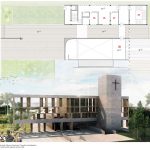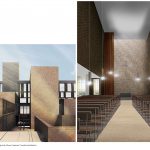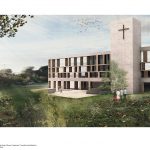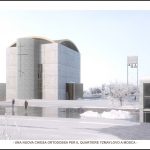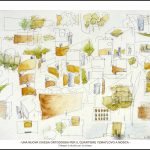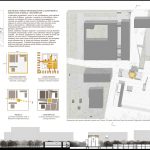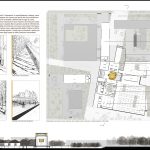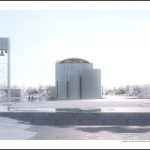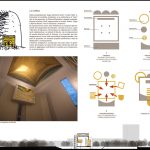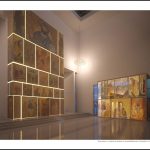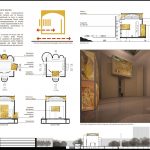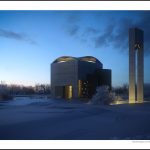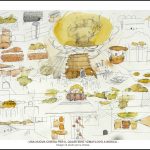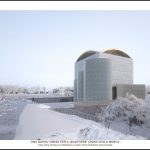The day 16 June 2017 met on Scientific Committee of Brother Sun Foundation for the evaluation of proposals received by the 7th Edition of the European Prize for Sacred Architecture admitted to trial.
The Jury, consisting of Luigi Leoni, Giorgio Della Longa, Esteban Fernández Cobián, Caterina Parrello, Valerio Pennasso e Walter Zahner unanimously proposed to assign the Prize ex aequo to four projects.
These are very diverse contributions, which subtend research paths in areas that are also distant from each other and which imply responses that it would be inappropriate to compare directly. Projects that essentially express ways of understanding the project of the sacred in a plural manner. The four award-winning works also do not necessarily stand out above the others.
As usual, other contributions were deemed worthy of attention and appreciated by the Jury.
First prize ex aequo
Irmina Niewczas
Hermitage. Prayer Enclave in Suchedniów
It is a project for a hermitage inside a disused quarry in the heart of Poland. A hermitage designed for an itinerary of the spirit in which, in solitude, the hermit inhabits twelve cells on consecutive days. Cells with a common matrix but always different. An ambitious programme that subtends a difficult theme: is it possible to characterise the cells to express through architecture the Ten Commandments and the Commandment of love? The candidate, who recognises a dose of "ambiguity" in this research, works with a language of strong abstraction, without slipping into allegory, in the search for variations on the theme.
Places for community life are also proposed, including the chapel in the heart of the hermitage centre. Introverted, inscribed in the centre of the quarry's body of water, it manifests on the surface, as in the famous monolithic churches carved in stone in northern Ethiopia, the cross of its form.
As with the other buildings, the central sacred space is characterised by the harsh, rough concrete material in dialogue with the dominant red of the quarry and the light penetrating the excavated spaces. A severe language, at the limit of habitability, a language that presupposes an adherence, a choice of life; one seems to hear silence in this place carved out of the natural landscape.
It was a complex project, almost a tour de force, in which the architect's creative vein had the opportunity to decline in variations on the theme; a poetic journey that the jury appreciated.
Giulia Drago, Federica Ingegno, Roberta Laera, Valentina Lazzaro, Simona L'Erario
Rothenfels Castle and the shape of the sacred building: Rudolf Schwarz and Romano Guardini.
The programme of the working group of the Politecnico di Bari, engaged in a research "aimed at identifying the typological and morphological characters of Schwarz's work on the sacred building, in order to define the general characters of his buildings and reinterpret them in the design phase that saw the completion of the Rothenfels Castle area and the design of a new sacred building", can only be considered ambitious.
Thus, the close analysis of Rudolf Schwarz's work is able to lead to the synthesis constituted by the extension project of the fortified village that saw the founding action of the German architect inextricably linked to the magisterium of the theologian Guardini. The jury assesses with interest and appreciation the courageous proof that proposes a revision of the Rothenfels hamlet where the historical fences are more tenuous today. The jury appreciates the design of the new church, which skilfully combines territorial and human scale, where the faithful find a new space for community meetings in the place that has seen the germination of the new European church architecture. The composition and language are guided by rigour; almost reckless, on the contrary, is the juxtaposition of the new church with the old castle mass. The jury recognises the communicative quality of the work.
Lucilla Di Paolo
San Vito parish complex in Taranto
The project building located in the promontory of San Vito in Taranto could be described as conventional compared to the others; it is the design of a parish complex, a recurring theme in the students' work.
The task is never easy when confronted, for example, with the peripherisation of the territory.
The theme is to characterise the parish complex in an urban setting that has suffered the neglect if not also the violence of man; the theme is to find a strong element to mark an identity, resolved by working on the ancient traces of a partly corrupted landscape; the theme is to give worthy prominence to the urban front to qualify the church building in the interior; the theme is to combine and juxtapose the parts of the whole and obviously give a solution to the interior, first and foremost the liturgical hall.
The jury appreciated the methodological process and the architectural result in this work.
Stefano Campanini
A new Orthodox church for the Yzmaylovo district in Moscow
The Russian Orthodox Church plans to build 400 new churches to partially heal the destruction of the recent past. The applicant takes up the challenge with the project of the New Religious Centre in the Yzmaylovo district, in the eastern suburban district of the city of Moscow, characterised by the diffuse city model. An urban project in which, according to tradition, it is the temple that becomes the catalyst of the surroundings.
Orthodox temple standing on the urban crossroads above the flows of today's city. The type adopted in fact is that of the two-level city; the lower level, of urban functions where the parish buildings are located, and the upper level, where the temple stands. A refined monument in the centre of the square, whose orientation to the east creates a transgression with respect to the geometries of the existing fabric.
The jury appreciated the complex theme, which included answers to the relationship between tradition and innovation, existing and addition, identity and differences.
Theme combining responses to the urban scale and the detailed solution of the temple. The handling of complexity impressed the jury favourably, who also appreciated the communicative quality of the work.

